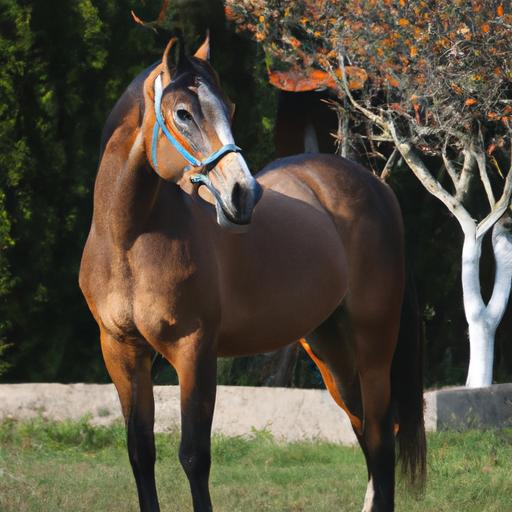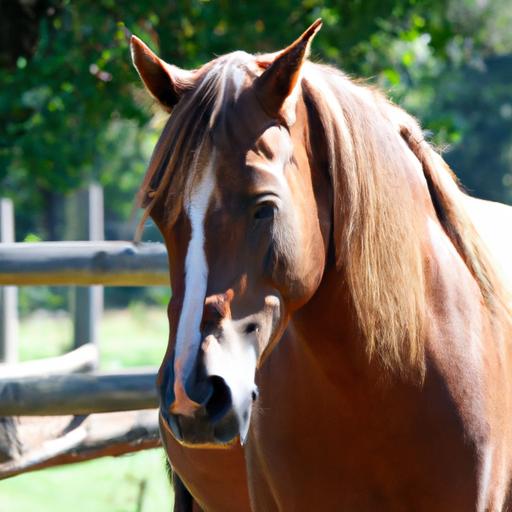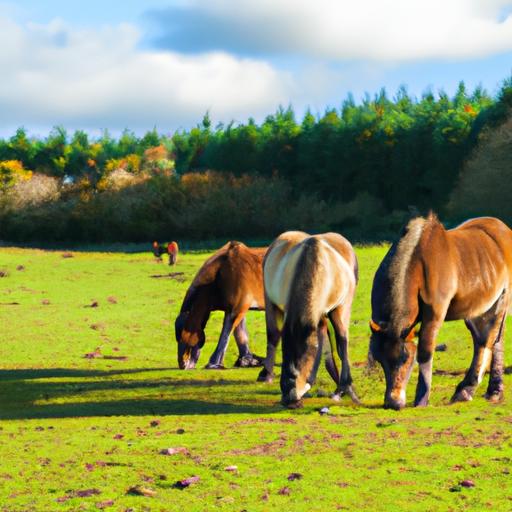Discover the rich legacy of european horse breeds, their unique traits, and cultural significance. Uncover the allure and versatility of these majestic equines.
Europe has long been renowned for its exceptional horse breeds, each with its own unique qualities and storied history. From the regal Friesian to the elegant Andalusian and the graceful Lipizzaner, European horse breeds have captivated horse enthusiasts worldwide. In this article, we will delve into the world of these remarkable equines, exploring their origins, characteristics, and their vital role in the equine industry.
Why are European horse breeds so important in the equine industry? Well, these breeds have left an indelible mark on various civilizations throughout history. Whether used in battle, for transportation, or as trusted companions, European horse breeds have been an integral part of human life for centuries. Their versatility, strength, and beauty make them highly sought after in various equestrian disciplines.
European horse breeds offer a diverse range of traits and abilities that cater to different riding styles and preferences. From the sturdy and versatile Friesian, favored for dressage, to the spirited Andalusian, known for its elegance in the show ring, each breed has its own unique charm. Whether you seek a companion for trail riding or a competitive partner for show jumping, there is a European horse breed perfectly suited to your needs.
These horses possess a certain je ne sais quoi, an essence that sets them apart. Their enchanting presence and striking physical attributes make them a sight to behold. Can you imagine the thunderous hooves of a majestic Friesian resonating through the countryside? Or the agility and grace of a Lipizzaner as it performs intricate dressage movements? European horse breeds have an allure that captures the hearts of equestrians worldwide.
In the next sections, we will explore the fascinating history and origins of European horse breeds, highlighting their distinctive traits and abilities. We will also discuss the challenges faced in preserving these breeds and the future prospects they hold. Join me on this enchanting journey into the realm of European horse breeds, where centuries of heritage and excellence await.
Stay tuned for the upcoming sections where we will delve deeper into the history and origins of European horse breeds, uncovering the captivating stories that have shaped their legacy. We will also explore the unique traits and abilities that make these horses true treasures in the equine world.
History and Origins of European Horse Breeds

Origins of Horse Domestication in Europe
The roots of European horse breeds trace back to the ancient times when humans first domesticated these magnificent creatures. Europe played a significant role in the early domestication of horses, with evidence suggesting that the process began around 4000 BCE. It was in these lands that the bond between humans and horses was forged, forever changing the course of history.
Historical Significance of European Horse Breeds
European horse breeds have played a pivotal role in various civilizations throughout the ages. From the powerful warhorses of the Roman Empire to the gallant steeds that carried knights into battle during the Middle Ages, these horses have been instrumental in shaping the outcomes of wars, conquests, and cultural exchanges.
During the Renaissance, European nobility prized horse breeding, leading to the refinement of specific breeds for specific purposes. The Andalusian, with its grace and agility, became a favorite among the Spanish nobles, while the Friesian, with its strength and elegance, found favor in the courts of Europe.
The Lipizzaner, hailing from the Imperial Spanish Riding School in Vienna, Austria, has a rich history dating back to the 16th century. These horses were bred for their exceptional temperament, intelligence, and precision, making them ideal for classical dressage. Today, the Lipizzaner continues to dazzle audiences with their breathtaking performances, showcasing the beauty and harmony between horse and rider.
European horse breeds have not only impacted the realms of war and royalty but have also left their mark on agriculture, transportation, and everyday life. From plowing fields to pulling carriages, these horses were the backbone of many European communities.
In the following sections, we will delve into the distinct characteristics and abilities of popular European horse breeds, shedding light on the qualities that make them truly exceptional. Join me as we uncover the individual traits that set these breeds apart and explore the diverse range of talents they possess.
Stay tuned as we journey further into the realm of European horse breeds, exploring the unique traits and abilities that have made them icons throughout history. Discover the grace of the Andalusian, the strength of the Friesian, and the elegance of the Lipizzaner.
Popular European Horse Breeds

Friesian: Majestic Elegance Personified
The Friesian horse, with its flowing mane and tail, exudes an air of regal elegance. Originating from the Netherlands, this breed is known for its captivating beauty and versatility. With a strong, muscular build and a striking black coat, the Friesian is a sight to behold. Renowned for its graceful movement, this breed excels in dressage and driving disciplines. Their gentle nature and willingness to please make them a popular choice for riders of all levels.
Andalusian: The Epitome of Grace and Power
Hailing from the Iberian Peninsula, the Andalusian horse is a true embodiment of grace and power. With its arched neck, expressive eyes, and flowing mane, the Andalusian is a vision of beauty. This breed is highly regarded for its versatility, excelling in dressage, show jumping, and even working equitation. Known for their exceptional trainability and intelligence, Andalusians make excellent partners in the arena and on the trails.
Lipizzaner: The Timeless Performer
The Lipizzaner, originating from the imperial stud of Lipica in Slovenia, is a breed steeped in history and tradition. These magnificent white horses are best known for their breathtaking performances in classical dressage. With their agile movements and precise footwork, Lipizzaners captivate audiences with their elegance and grace. The breed’s noble appearance, intelligence, and willingness to perform intricate maneuvers make them highly sought after in the world of dressage.
Other Remarkable European Horse Breeds
While the Friesian, Andalusian, and Lipizzaner are among the most well-known European horse breeds, there are many others worth mentioning. The athletic and versatile Irish Sport Horse, the robust and hardy Connemara pony, and the agile and spirited Dutch Warmblood are just a few examples of the diverse range of European horse breeds. Each breed possesses its own unique characteristics, allowing riders to find the perfect match for their equestrian pursuits.
In the upcoming sections, we will further explore the exceptional traits and abilities of European horse breeds, shedding light on what sets them apart and makes them excel in various disciplines. Join me as we uncover the captivating stories and remarkable talents of these magnificent equines.
Unique Traits and Abilities of European Horse Breeds
European horse breeds are renowned for their distinct features and remarkable abilities, making them highly sought after in various equestrian disciplines. Let’s explore the exceptional qualities that set these breeds apart and make them excel in disciplines such as dressage, show jumping, and endurance riding.
1. Dressage: The Epitome of Elegance and Precision
European horse breeds, such as the magnificent Andalusian and the noble Lipizzaner, are revered for their exceptional suitability for dressage. Their natural agility, flexibility, and willingness to learn make them ideal partners for the intricate movements and high-level collection required in this discipline. With their graceful presence and harmonious cooperation, these breeds effortlessly captivate judges and spectators alike.
2. Show Jumping: Power, Scope, and Precision
When it comes to show jumping, European horse breeds shine with their combination of power, scope, and precise footwork. The athletic Friesian and the versatile Dutch Warmblood are just a couple of examples of breeds known for their jumping prowess. Their ability to quickly assess and navigate complex courses, coupled with their impressive jumping technique, allows them to soar over obstacles with grace and accuracy.
3. Endurance Riding: Stamina and Resilience
Endurance riding demands horses with exceptional stamina, resilience, and a cooperative nature. European horse breeds such as the Arabian and the Akhal-Teke, with their origins in the continent, have long been favored in endurance competitions. These breeds possess remarkable endurance capabilities, enabling them to cover substantial distances at a sustained pace while maintaining their energy levels. Their strong work ethic and adaptable nature make them ideal companions for endurance riders who venture on long-distance journeys.
4. Versatility: The All-Rounders of the Equestrian World
European horse breeds are renowned for their versatility, excelling in a wide range of disciplines. Whether it’s the Irish Sport Horse, known for its versatility in eventing, or the Hanoverian, prized for its talent in both dressage and show jumping, these breeds showcase their adaptability and aptitude for multiple disciplines. Their balanced conformation, trainability, and natural athleticism make them the go-to choice for riders seeking a well-rounded equine partner.
European horse breeds truly embody the epitome of excellence in the equestrian world. With their unique traits and abilities, they continue to enchant riders and spectators worldwide, leaving an indelible mark on the equine industry.
Stay tuned for the upcoming sections where we will delve deeper into the preservation efforts and challenges faced in maintaining the purity and genetic diversity of European horse breeds. We will also explore the future prospects and impact these breeds hold for the equine industry and their role in preserving cultural heritage.
Preservation Efforts and Challenges
Preserving the legacy and genetic diversity of European horse breeds is of utmost importance to ensure their continued existence and contributions to the equine world. However, this task is not without its challenges. Let’s delve into the discussion on the conservation and preservation efforts for these remarkable breeds and the hurdles that must be overcome.
Conservation and Preservation of European Horse Breeds
Efforts to conserve and preserve European horse breeds have gained momentum in recent years, driven by the recognition of their cultural and historical significance. Various organizations and breed associations are dedicated to safeguarding these breeds by implementing breeding programs, establishing registries, and promoting responsible ownership.
These initiatives focus on maintaining purebred populations, protecting genetic diversity, and ensuring the continuation of desirable traits within each breed. By adhering to strict breeding standards and guidelines, breeders aim to preserve the integrity and authenticity of European horse breeds for future generations to cherish.
Challenges Faced in Maintaining Purebred Populations and Genetic Diversity
Preserving the genetic diversity of European horse breeds presents a significant challenge. With the advancement of modern breeding practices and the growing demand for specific traits, there is a risk of overemphasis on certain bloodlines or characteristics. This can lead to a loss of genetic variation within the breed, compromising their overall health and adaptability.
Additionally, the small population sizes of some European horse breeds pose a threat to their survival. Limited numbers make it challenging to maintain a diverse gene pool and avoid inbreeding, which can result in reduced fertility, compromised immune systems, and other health issues. Efforts to increase breed awareness, attract new breeders, and encourage responsible breeding practices are crucial in overcoming this obstacle.
Innovative techniques such as artificial insemination and embryo transfer have been utilized to overcome geographical limitations and expand breeding opportunities. These advancements, coupled with collaboration between breeders and geneticists, play a vital role in preserving the genetic diversity of European horse breeds.
Preservation efforts are not without their complexities, but through dedicated collaboration, education, and responsible breeding practices, we can ensure that the captivating beauty and heritage of European horse breeds endure for generations to come.
In the next section, we will delve into the future prospects and the potential impact that European horse breeds hold. Join me as we explore the exciting possibilities that lie ahead for these magnificent equines.


